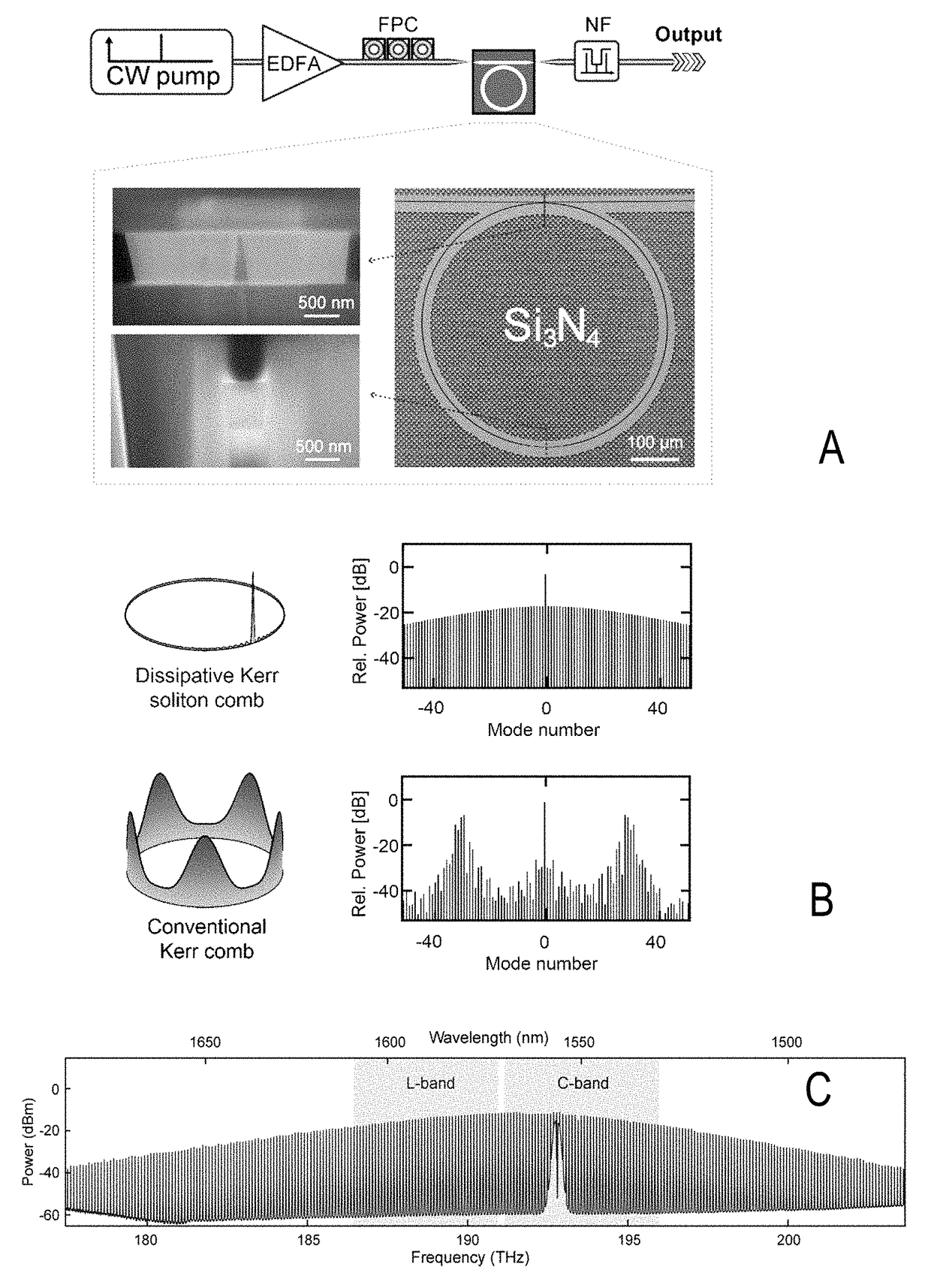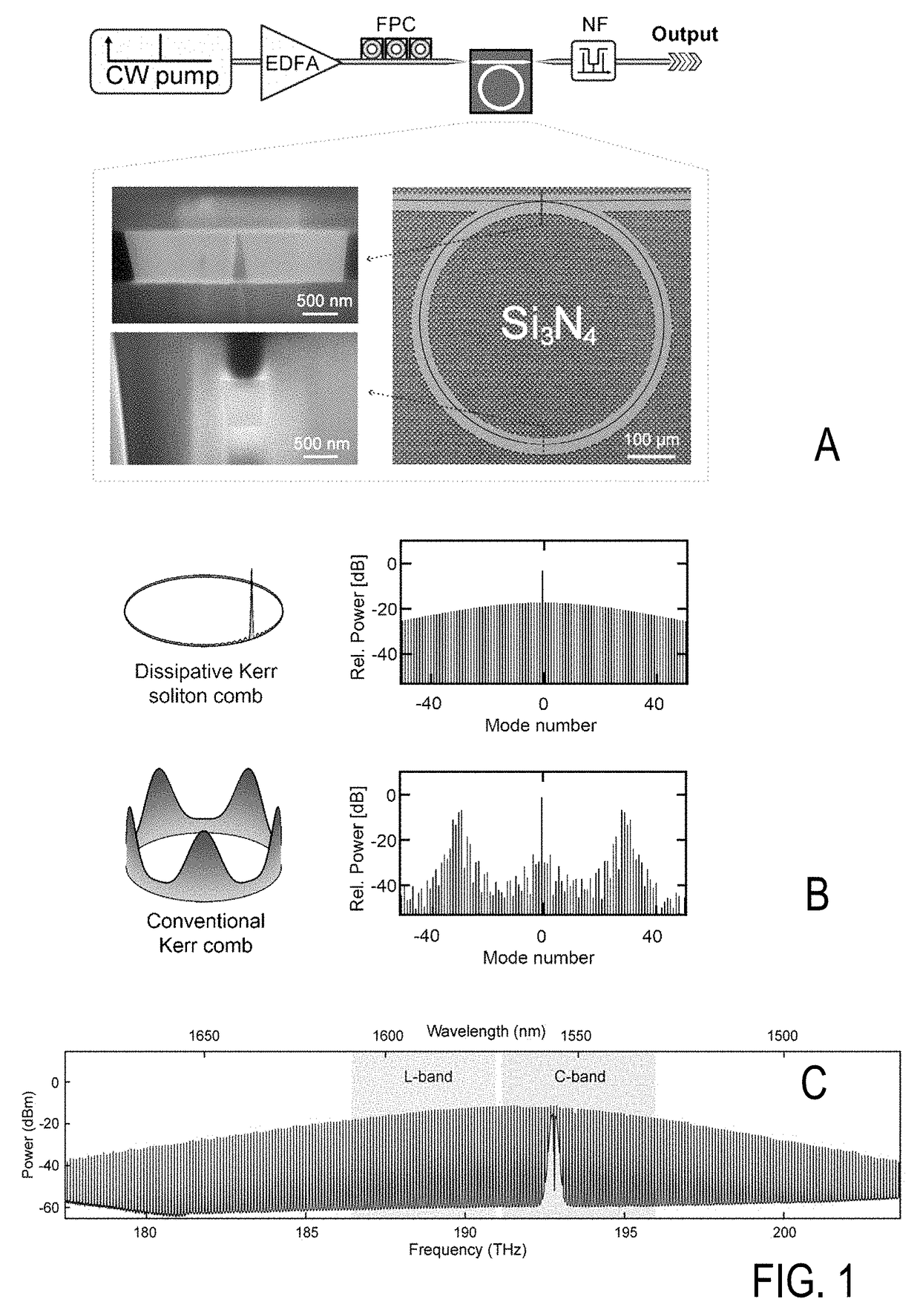Signal processing apparatus and method for transmitting and receiving coherent parallel optical signals
- Summary
- Abstract
- Description
- Claims
- Application Information
AI Technical Summary
Benefits of technology
Problems solved by technology
Method used
Image
Examples
first embodiment
of the Invention
[0107]According to the illustrated first embodiment of the invention (see FIGS. 2, 4, 5, 7 and 8), two interleaved soliton Kerr combs are used to generate a total of 179 optical carriers in the C and L band, resulting in a carrier spacing of approximately 50 GHz. Using a combination of 16QAM and QPSK, an aggregate line rate (net data rate) of 55.0 Tbit / s (50.2 Tbit / s) is achieved, which is transmitted over a distance of e. g. 75 km. This is the highest data rate achieved to date with a chip-scale frequency comb source and it compares very well to the highest capacity of 97.7 Tbit / s hitherto transmitted through a single-mode fiber core7. Optical carriers derived from the soliton Kerr comb do not exhibit implementation penalty compared to carriers derived from a conventional high-quality external cavity laser (ECL).
[0108]FIG. 2 illustrates the data transmission using dissipative Kerr soliton (DKS) frequency comb generators as optical sources for massively parallel wave...
second embodiment
of the Invention
[0166]According to the second embodiment of the invention, coherent detection using a Kerr soliton frequency comb as a multi-wavelength local oscillator (LO) is demonstrated. The LO comb is coarsely synchronized to the transmitter comb while digital signal processing is used to account for remaining frequency differences. Using 99 WDM channels in the C and L band and operating each channel with 16QAM at 50 GBd, an aggregated line rate (net data rate) of 39.6 Tbit / s (34.6 Tbit / s) is transmitted. The results indicate the tremendous potential of Kerr soliton combs, not only as optical sources for massively parallel WDM transmission but also as multi-wavelength local oscillators for massively parallel coherent reception. Such devices are of great interest for optical interconnects within and between large-scale data-centers36.
[0167]FIG. 3 shows coherent data transmission with dissipative Kerr soliton (DKS) frequency combs both at the transmitter and at the receiver side....
PUM
 Login to View More
Login to View More Abstract
Description
Claims
Application Information
 Login to View More
Login to View More - R&D
- Intellectual Property
- Life Sciences
- Materials
- Tech Scout
- Unparalleled Data Quality
- Higher Quality Content
- 60% Fewer Hallucinations
Browse by: Latest US Patents, China's latest patents, Technical Efficacy Thesaurus, Application Domain, Technology Topic, Popular Technical Reports.
© 2025 PatSnap. All rights reserved.Legal|Privacy policy|Modern Slavery Act Transparency Statement|Sitemap|About US| Contact US: help@patsnap.com



